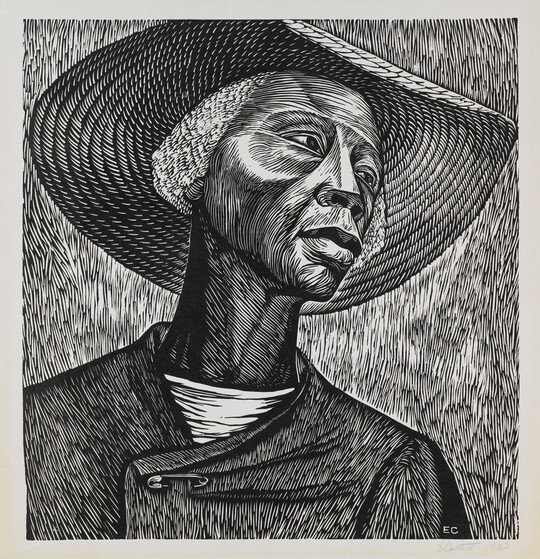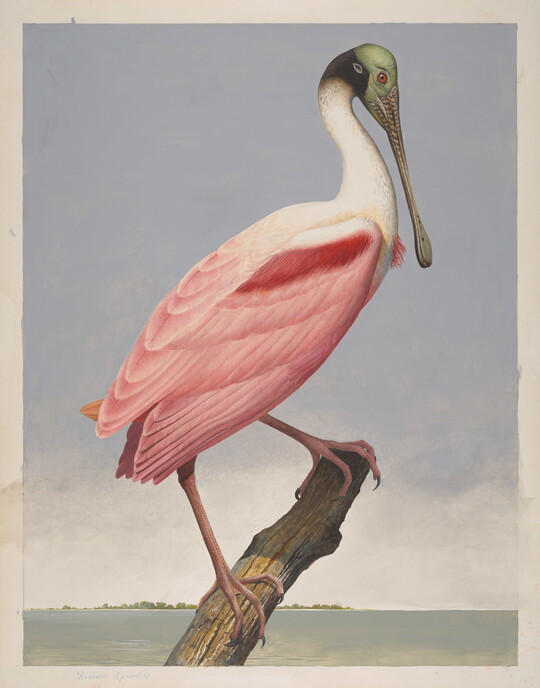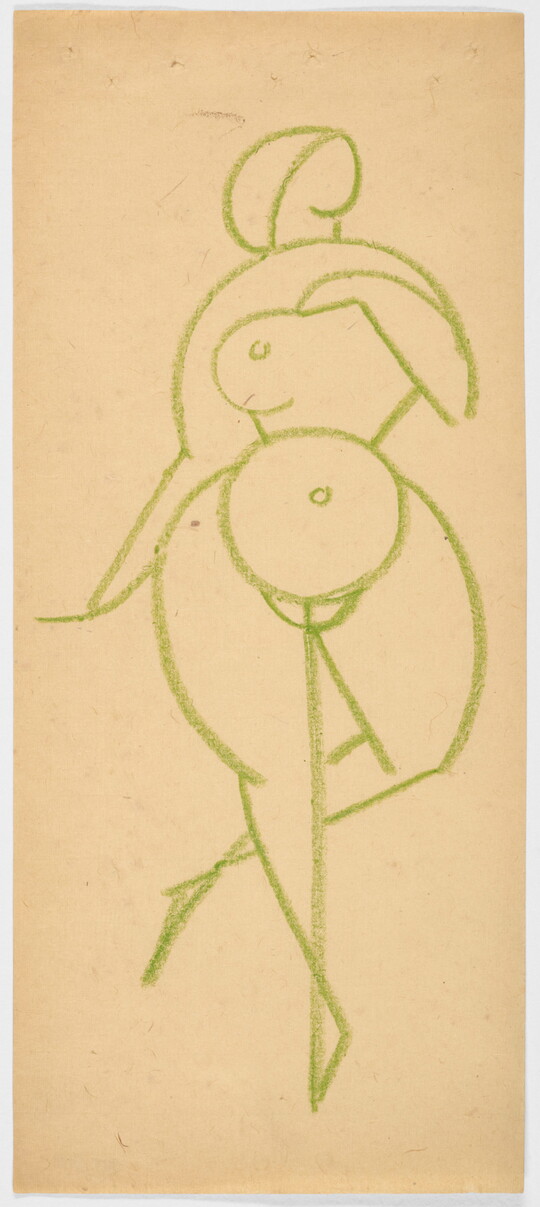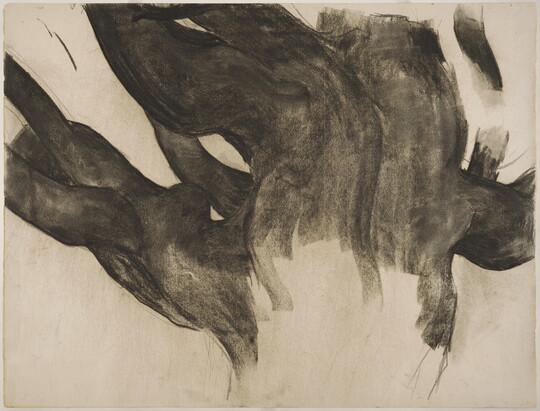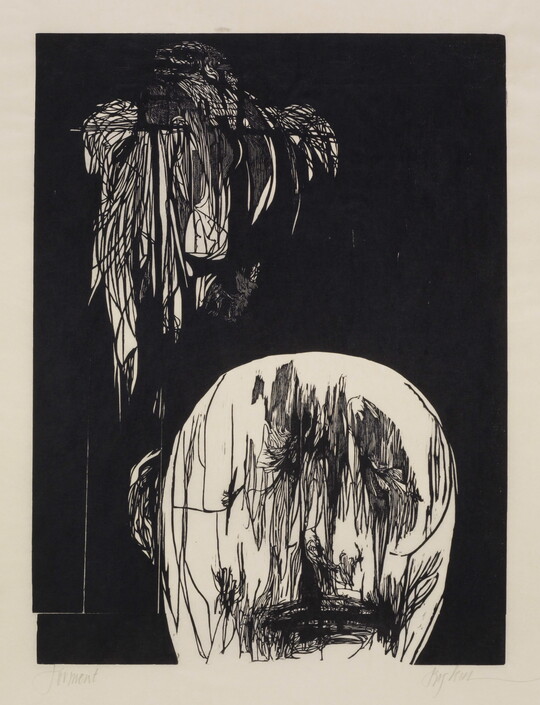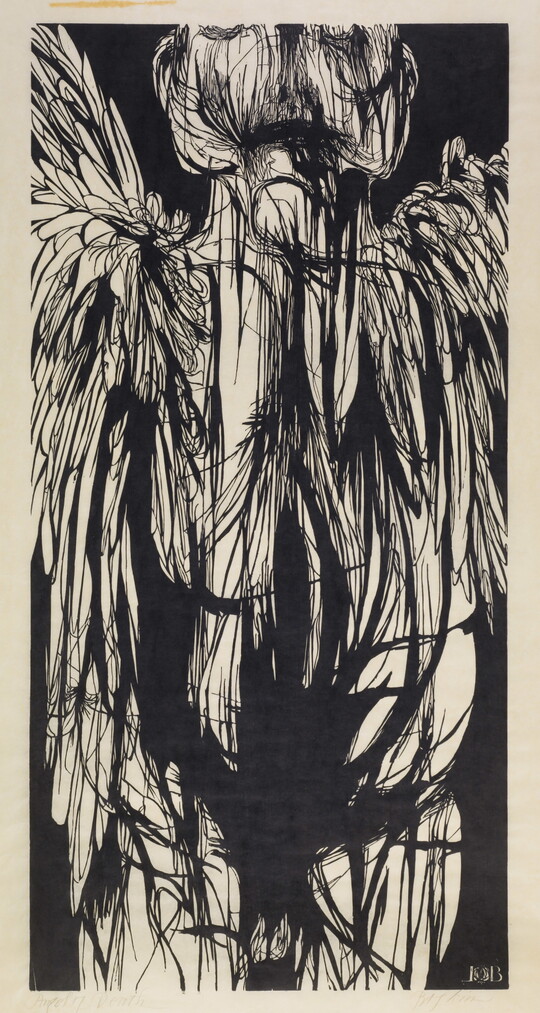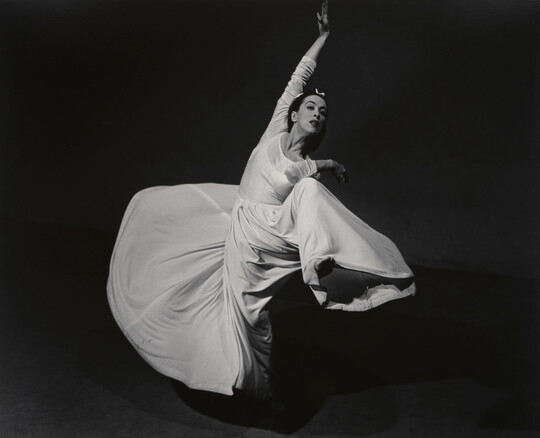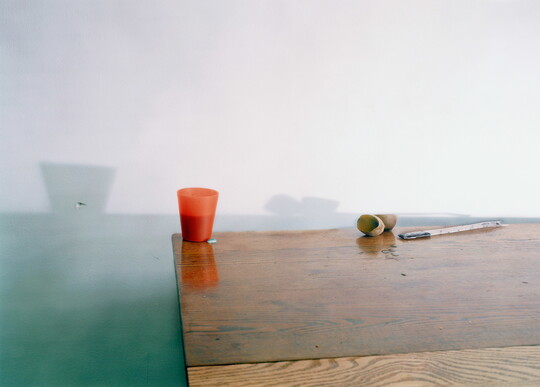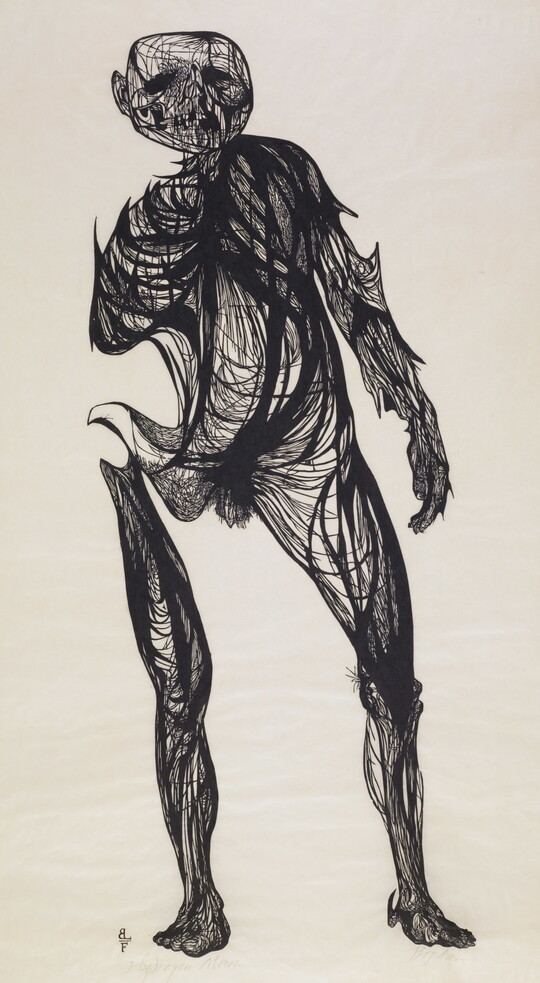


Artwork Images
Photo:
Controls
Four Boats
Object Details
-
Date
1919
-
Object Type
Prints
-
Medium
Woodcut
-
Dimensions
Image: 11 3/4 x 12 in.
Sheet: 15 1/2 x 17 1/8 in. -
Edition
4
-
Inscriptions
Recto:
signed and dated l.l. beneath image, in graphite: Blanche Lazzell - 1919-
Verso:
inscribed l.l. in graphite: $34/#49 [crossed out] \ P1 [number 1 written over a "2"] 34 \ PI
-
Credit Line
Amon Carter Museum of American Art, Fort Worth, Texas
-
Accession Number
1987.5
-
Copyright
© Estate of Blanche Lazzell
-
American Masters of the WoodcutMarch 29–October 12, 2003
This exhibition presents a survey of the resurgence of relief printmaking in America, when it was transformed into a lively art form well suited to accommodate a highly personal and experimental approach to graphic expression.
-
Modern Masters of the WoodcutNovember 8, 2014–January 18, 2015
This exhibition showcases the evolution of the woodcut, proving that while the methodology of woodblock printing is not much changed over the last century, the pliant medium is capable of bold new forms of artistic expression.
-
Set in Motion: Camille Utterback and Art That MovesSeptember 3–December 8, 2019
This exhibition pairs an interactive installation by new-media artist Camille Utterback with a century of art by women depicting motion from the Carter’s collection.
Additional details
Location: Off view
See more by Blanche Lazzell
Tags
-
How does an artist's choice of medium and materials impact an artwork?
Why might an artist choose to abstract a scene rather than to create a more representational, or realistic, depiction?
How has the role of women in the arts changed over time?
-
What do you see? Are there are any objects you recognize? The title is Four Boats; can you identify them? Can you spot the figure? Where is the figure located? What does it appear the figure is doing? How can you tell? Who might it represent?
What types of lines and shapes are creating the boats and the figure? What other types of lines and shapes do you see? What might they be representing?
In what kind of place do you think these boats and the figure are located? How can you tell?
What colors do you see? Which colors pop? Which colors recede? Which colors did the artist use the most?
What color line do you see around each shape? What impact do these white lines have on the artwork?
Why do you think the artist included the blue lines on the edges of the paper? How do these lines inform our viewing of the artwork?
This artwork is a print made from carving into a woodblock. Which parts of the image do you think were carved away? Which were left? What challenges might occur when creating a woodblock print? Have you ever made a print? If so, how was the process different from making a painting? What did you like about the process? What did you find challenging?
-
Grades Pre-K–3
Have students draw a large simple shape on a piece of paper. Then, using a marker, within the shape divide the space with a few simple lines. Then the students will color in each new section with a different color using crayons or colored pencils. After the new areas are colored in, the students will cut along the lines that they drew. They will then reassemble their overall shape onto a piece of white paper; however, when they reassemble it, they will make sure there is a little space between the shapes so the white paper shows through, mimicking the white lines in Lazzell’s Four Boats. Once they have assembled their shapes, students can glue them down to create their white-line artwork.
Grades 3–5
Students will engage in a simple printmaking process. On a thin piece of Styrofoam, have students use a marker to draw simple shapes. Then they will use a pencil to trace the marker lines, gently carving in their shapes. Next, place a small amount of tempera paint for each student on a tray or plate. The students will then coat a small roller with the paint and apply it to their Styrofoam piece. Once the paint is rolled onto the Styrofoam, the students will cover it with a piece of paper and use their hands to press the paper down firmly. Then they will lift the paper off the Styrofoam and reveal their print of simple shapes. Once the paint is washed off the Styrofoam, students may create more prints using different colors.
Grades 6–12
Activity 1
Students will research the Provincetown Printers. Students should determine who the members were, and what were their contributions to the modern art movement in the United States.Activity 2
Students will research the white-line printing process used by Lazell and other Provincetown Printers. How does it compare to other printing techniques? Who developed the white-line printing technique? What influenced the creator of this process?
Share Educator Resources
Amon Carter Disclaimer
This information is published from the Carter's collection database. Updates and additions based on research and imaging activities are ongoing. The images, titles, and inscriptions are products of their time and are presented here as documentation, not as a reflection of the Carter’s values. If you have corrections or additional information about this object please email us to help us improve our records.
Every effort has been made to accurately determine the rights status of works and their images. Please email us if you have further information on the rights status of a work contrary or in addition to the information in our records.
Related Works
-
Sharecropper, ca. 1952
Elizabeth Catlett
Linocut
2008.5
-
Roseate Spoonbill, ca. 1980-85
Scott Gentling, Stuart Gentling
Graphite, opaque and transparent watercolor on paper
2018.26
-
Green Nude, ca. 1920
Gaston Lachaise
Crayon on paper
2018.4
-
Drawing No. 18, 1919
Georgia O'Keeffe
Charcoal on paper
1997.2
-
Torment, 1958
Leonard Baskin
Woodcut
1971.21
-
Angel of Death, 1959
Leonard Baskin
Woodcut
1971.25
-
Martha Graham - Letter to the World (Swirl), 1940
Barbara Morgan
Gelatin silver print
P1974.21.17
-
Untitled #52, 2002
Laura Letinsky
Dye coupler print
P2007.3
-
The Hydrogen Man, 1954
Leonard Baskin
Woodcut
1971.18


